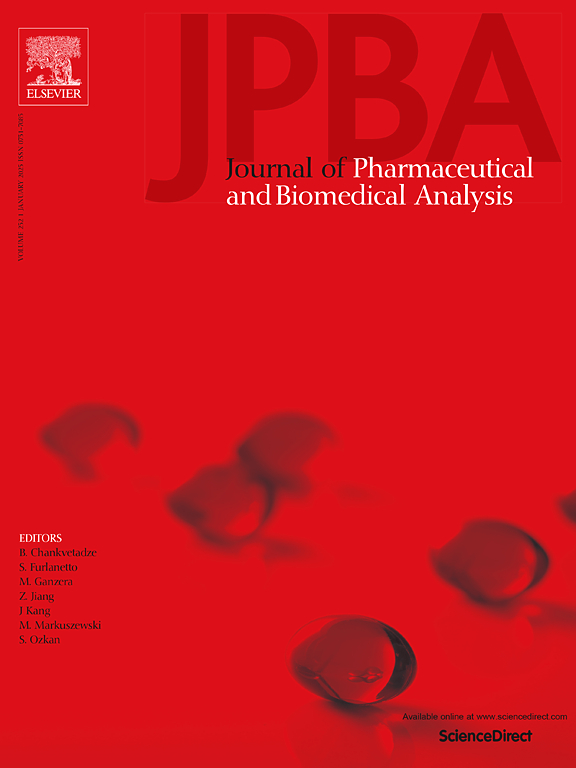Novel approaches in CRISPR/Cas12a-based sensing for HCC diagnosis - A review (2020–2025)
IF 3.1
3区 医学
Q2 CHEMISTRY, ANALYTICAL
Journal of pharmaceutical and biomedical analysis
Pub Date : 2025-04-07
DOI:10.1016/j.jpba.2025.116878
引用次数: 0
Abstract
Early diagnosis of hepatocellular carcinoma (HCC) is crucial for improving patient survival and treatment outcomes and the early detection of biomarkers for HCC is key to achieving this goal. However, conventional detection methods often lack sufficient specificity and sensitivity. In recent years, CRISPR/Cas12a-based biosensing has gained significant attention due to its ease of use and high sensitivity, demonstrating its potential to address the limitations of conventional detection methods. This paper primarily reviews the research progress of CRISPR/Cas12a-based biosensors for HCC detection, introducing their fluorescence, electrochemical, colorimetric, and other detection principles, as well as practical applications in detail. Additionally, the differences in sensitivity, specificity, and detection speed among different types of CRISPR/Cas12a biosensors are comparatively analyzed. Finally, the potential future directions for the development and application of CRISPR/Cas12a technology in clinical settings are explored.
基于CRISPR/ cas12的HCC诊断传感新方法综述(2020-2025)
肝细胞癌(HCC)的早期诊断对于提高患者的生存率和治疗效果至关重要,而早期检测HCC的生物标志物是实现这一目标的关键。然而,传统的检测方法往往缺乏足够的特异性和灵敏度。近年来,基于CRISPR/ cas12的生物传感因其易于使用和高灵敏度而备受关注,显示出其解决传统检测方法局限性的潜力。本文主要综述了基于CRISPR/ cas12的肝癌检测生物传感器的研究进展,详细介绍了其荧光、电化学、比色等检测原理及实际应用。对比分析了不同类型的CRISPR/Cas12a生物传感器在灵敏度、特异性、检测速度等方面的差异。最后,探讨了CRISPR/Cas12a技术在临床环境中发展和应用的潜在未来方向。
本文章由计算机程序翻译,如有差异,请以英文原文为准。
求助全文
约1分钟内获得全文
求助全文
来源期刊
CiteScore
6.70
自引率
5.90%
发文量
588
审稿时长
37 days
期刊介绍:
This journal is an international medium directed towards the needs of academic, clinical, government and industrial analysis by publishing original research reports and critical reviews on pharmaceutical and biomedical analysis. It covers the interdisciplinary aspects of analysis in the pharmaceutical, biomedical and clinical sciences, including developments in analytical methodology, instrumentation, computation and interpretation. Submissions on novel applications focusing on drug purity and stability studies, pharmacokinetics, therapeutic monitoring, metabolic profiling; drug-related aspects of analytical biochemistry and forensic toxicology; quality assurance in the pharmaceutical industry are also welcome.
Studies from areas of well established and poorly selective methods, such as UV-VIS spectrophotometry (including derivative and multi-wavelength measurements), basic electroanalytical (potentiometric, polarographic and voltammetric) methods, fluorimetry, flow-injection analysis, etc. are accepted for publication in exceptional cases only, if a unique and substantial advantage over presently known systems is demonstrated. The same applies to the assay of simple drug formulations by any kind of methods and the determination of drugs in biological samples based merely on spiked samples. Drug purity/stability studies should contain information on the structure elucidation of the impurities/degradants.

 求助内容:
求助内容: 应助结果提醒方式:
应助结果提醒方式:


